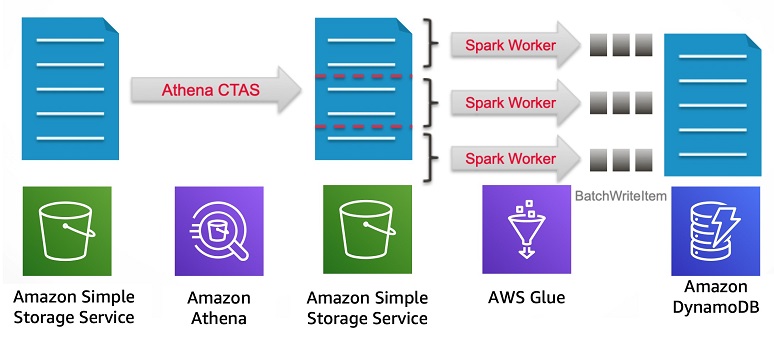AWS Database Blog
Category: Storage
Cost-effective disaster recovery for Amazon Aurora databases using AWS Backup
You may have stringent regulatory compliance obligations that require an effective multi-Region disaster recovery (DR) plan to mitigate a Region-wide disaster. AWS offers multiple methods to meet these needs, taking into consideration different factors such as recovery time objective (RTO), recovery point objective (RPO), and costs. In this post, I focus on how to keep […]
Export and analyze Amazon DynamoDB data in an Amazon S3 data lake in Apache Parquet format
January 2023: Please refer to Accelerate Amazon DynamoDB data access in AWS Glue jobs using the new AWS Glue DynamoDB Export connector for more recent updates on using Amazon Glue to extract data from Amazon DynamoDB. Amazon DynamoDB is a key-value and document database that delivers single-digit millisecond performance at any scale. It’s a fully […]
Building data lakes and implementing data retention policies with Amazon RDS snapshot export to Amazon S3
Amazon Relational Database Service (RDS) helps you easily create, operate, and scale a relational database in the cloud. In January 2020, AWS announced the ability to export snapshots from Amazon RDS for MySQL, Amazon RDS for PostgreSQL, Amazon RDS for MariaDB, Amazon Aurora PostgreSQL, and Amazon Aurora MySQL into Amazon S3 in Apache Parquet format. […]
Improving Oracle backup and recovery performance with Amazon EBS multi-volume crash-consistent snapshots
Amazon Elastic Block Store (EBS) snapshots offer the ability to back up the data on your EBS volumes to Amazon S3 by taking point-in-time snapshots. If you run your Oracle Databases on Amazon EC2 and use EBS volumes, you may be using EBS snapshots to meet your backup requirements. Prior to May 2019, you had […]
How realtor.com maximized data upload from Amazon S3 into Amazon DynamoDB
This is a customer post by Arup Ray, VP Data Technology at realtor.com, and Daniel Whitehead, AWS Solutions Architect. Arup Ray would like to acknowledge Anil Pillai, Software Development Engineer at Amazon, for his pioneering contributions to this project during his former tenure at realtor.com as Senior Principal Data Engineer. realtor.com , operated by Move, Inc., […]
Integrating Amazon RDS for Oracle with Amazon S3 using S3_integration
Amazon RDS for Oracle gives you the full benefits of a managed service solution. You can use the lift-and-shift approach to migrate your legacy Oracle database to Amazon RDS for Oracle and, as a result, reduce the need to refactor and change existing application components. Data warehouse (DW) extraction is an integral part of most […]
Store SQL Server backups in Amazon S3 using AWS Storage Gateway
Customers like Alkami and Acadian Asset Management use AWS Storage Gateway to back up their Microsoft SQL Server databases directly to Amazon S3, reducing their on-premises storage footprint and leveraging S3 for durable, scalable, and cost-effective storage. Storage Gateway is a hybrid cloud storage service providing on-premises applications with access to virtually unlimited cloud storage. […]
Best storage practices for running production workloads on hosted databases with Amazon RDS or Amazon EC2
October 2023: This post was reviewed and updated for accuracy. AWS offers multiple options to host your databases serving OLTP workloads – host your own managed database on Amazon EC2 instances or use Amazon RDS managed by AWS. RDS manages high availability, automated backups, database upgrades, OS patches, security, and read replica. RDS also offers […]
Using Amazon EBS elastic volumes with Oracle databases (part 3): databases using Oracle ASM
October 2024: This post was reviewed for accuracy. In parts 1 and 2 of this blog series, we discuss the elastic volumes feature for Amazon EBS and how it works with Oracle database storage layouts. We discuss elastic volumes with databases that use operating-system file systems and that use Logical Volume Managers (LVM) for database […]
Using Amazon EBS elastic volumes with Oracle databases (part 2): databases using LVM
August, 2024: This post has been reviewed and updated for accuracy. In part 1 of this blog series, we discuss the elastic volumes feature. We also discuss Oracle database storage layouts for simple databases that use a single Amazon EBS volume without LVM for database storage. In this post, part 2 of the series, we […]









